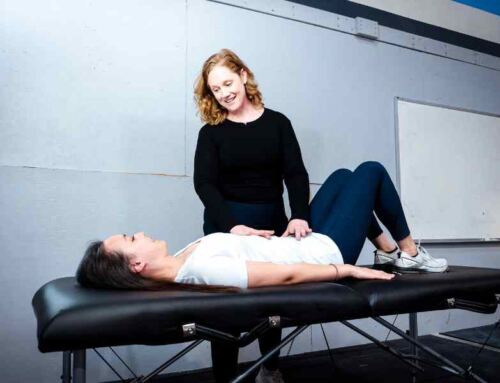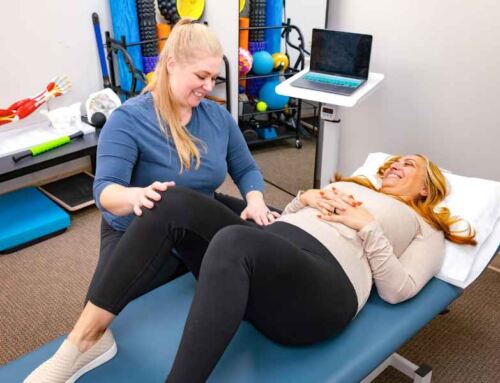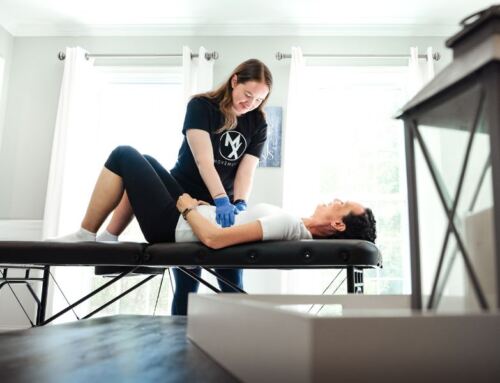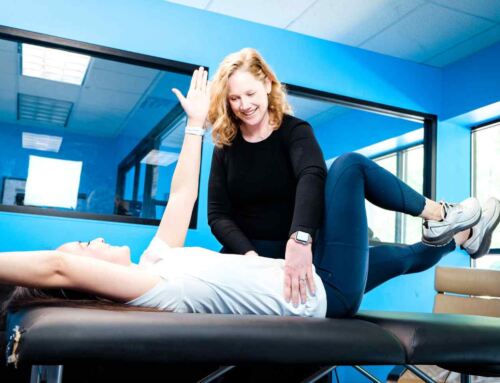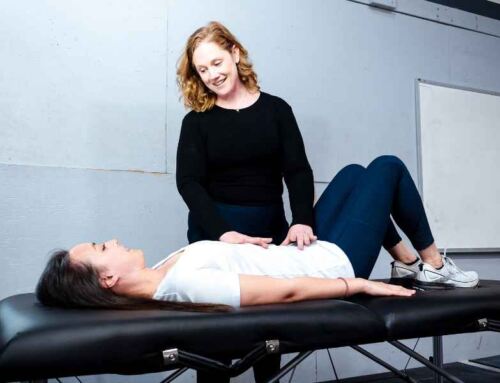Hormones are powerful messengers. They guide everything from your menstrual cycle to pregnancy to the transition into menopause.
But they don’t just affect reproduction.
Hormones influence mood, energy, bone density, digestion, and even how your muscles and joints feel.
At each stage of life, the pelvic floor feels these hormonal changes in very real ways. The problem? Most people aren’t taught what to expect, let alone how to care for themselves.
That’s where pelvic health physical therapy comes in: Helping you manage symptoms, prevent issues, and build resilience through every phase.
Let’s walk through the big hormonal milestones and how they impact your body.

Menstruation: The First Big Shift
For many, menstruation is the first experience of hormonal change. Alongside cramps, bloating, and mood swings, it’s often when people first become aware of their pelvic floor muscles… whether that’s through period cramps, bowel changes, or even the use of menstrual products.
The cycle is driven by hormones, specifically follicle-stimulating hormone (FSH), luteinizing hormone (LH), estrogen, and progesterone UCSF Health. These hormones fluctuate each month to regulate ovulation and the menstrual cycle UCSF Health.
Sometimes, these fluctuations can bring challenges:
- PMS (premenstrual syndrome): physical and emotional symptoms like bloating, cramping, irritability.
- PMDD (premenstrual dysphoric disorder): a more severe form of PMS, often paired with mood changes that interfere with daily life.
- Endometriosis and PCOS: chronic conditions that are often diagnosed years after the onset of menstruation and result in additional severe symptoms throughout the cycle.
Research also shows hormonal changes may influence cognition. Some people notice differences in working memory, attention, or processing speed during the luteal phase, although mood changes, sleep, and contraceptive use can also play a role Le et al., 2020.
How pelvic PT helps:
- Easing cramps and pelvic pain.
- Supporting bowel and bladder health.
- Helping patients understand and manage pelvic floor function from the start.

Pregnancy and Childbirth: A Whole-Body Transformation
Pregnancy is perhaps the most dramatic hormonal shift the body experiences throughout the lifespan. Rising levels of estrogen, progesterone, relaxing, and hCG reshape almost every single system in the body Jee & Sawal, 2024:
- Cardiovascular: blood volume rises, blood vessels relax, and the heart works harder.
- Respiratory: progesterone boosts the drive to breathe, while simultaneously the growing uterus limits lung expansion.
- Renal: kidneys filter more blood and retain extra fluid, sometimes leading to swelling.
- Metabolic: insulin resistance develops to ensure glucose for the baby, while fat metabolism shifts Healthline.
- Musculoskeletal: relaxing loosens ligaments for delivery, while posture changes with a shifting center of gravity in the direction of the growing belly.
- Other changes: slowed digestion, skin changes, and altered immune function.
Postpartum Hormone Reset
And the changes don’t end after birth. After delivery, estrogen and progesterone levels drop sharply. Most people’s hormone levels gradually return to their pre-pregnancy state within six to twelve months, but this timeline varies depending on whether they are breastfeeding, their overall health, and other factors Mayo Clinic. While hormones are rebalancing, symptoms like mood swings, hot flashes, night sweats, or irregular cycles can appear.
How Pelvic PT Helps Pregnancy and Childbirth
- Preparing the pelvic floor for labor and delivery.
- Managing pregnancy-related pain or leakage.
- Supporting postpartum recovery.
- Addressing the effects of the postpartum hormonal reset.

Perimenopause to Menopause: The Long Goodbye to Estrogen
Perimenopause, the transition leading up to menopause, can last for years. During this time, estrogen and progesterone levels fluctuate unpredictably before eventually declining. Menopause itself is reached when menstruation has stopped for 12 months.
Symptoms can include:
- Hot flashes and night sweats
- Sleep disruption
- Mood changes or irritability
- Vaginal dryness and painful sex
- Urinary urgency or leakage
- Bone density loss
- Changes in metabolism and weight distribution
These aren’t just inconveniences. They reflect how deeply hormones affect the body. Lower estrogen can thin vaginal tissues, weaken pelvic support, and reduce lubrication, making sex painful. It can also accelerate bone loss, raising the risk of osteoporosis Santoro et al., 2021. Meanwhile, shifts in collagen and muscle tone can contribute to pelvic organ prolapse or urinary leakage.
How Pelvic PT Helps Perimenopause to Menopause
- Supporting sexual health with strategies for pain and pelvic muscle coordination.
- Building pelvic floor and core strength to combat leakage and prolapse.
- Maintaining bone density, strengthening muscles, improving mobility through targeted exercise.
- Offering tools for bladder and bowel control.
Why It Matters
Hormonal shifts aren’t rare, in fact they’re a constant in life. And while not every symptom can (or should) be blamed on hormones, these changes influence every major body system, including the pelvic floor.
Whether you’re navigating your first periods, preparing for childbirth, breastfeeding, or adjusting to menopause, pelvic health physical therapy can help you:
- Relieve pain and discomfort.
- Improve bladder, bowel, and sexual function.
- Strengthen your body and balance your nervous system.
- Adapt with confidence to each life stage.
And this is just one piece of the puzzle. Working alongside other healthcare providers ensures the whole body gets the care it needs no matter what stage of life you are in.
Pelvic health PT isn’t only about fixing problems after they start—it’s about preventing issues, building resilience, and giving you tools to thrive along every step of the journey.
Keep Learning
Want to keep learning? Check out these resources:
About the Author
Dr. Bridget Ochuko is a physical therapist based in Durham, NC. She treats prenatal and postpartum folks, pregnant and postpartum runners, active young adults, active aging adults, and complex and/or chronic pelvic pain alongside women’s health. Dr. Bridget also prioritizes LGBTQIA+ inclusive care. With a focus on holistic, well-rounded care for everyone, Dr. Bridget is here to help you learn movements and strategies to improve your overall quality of life.




